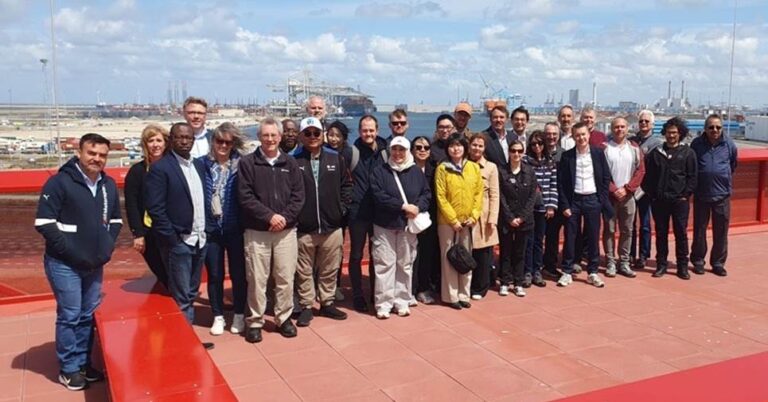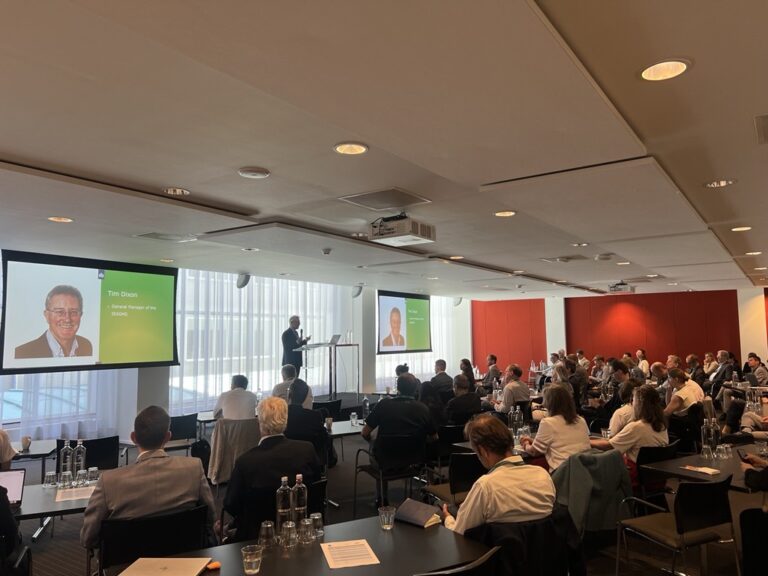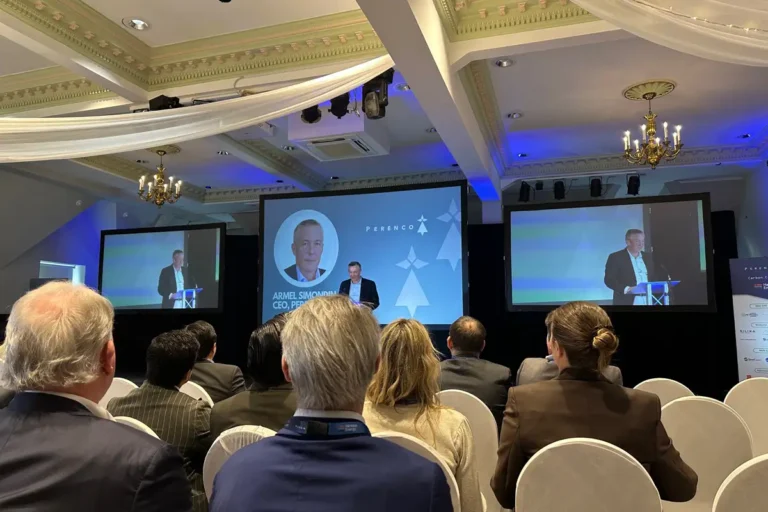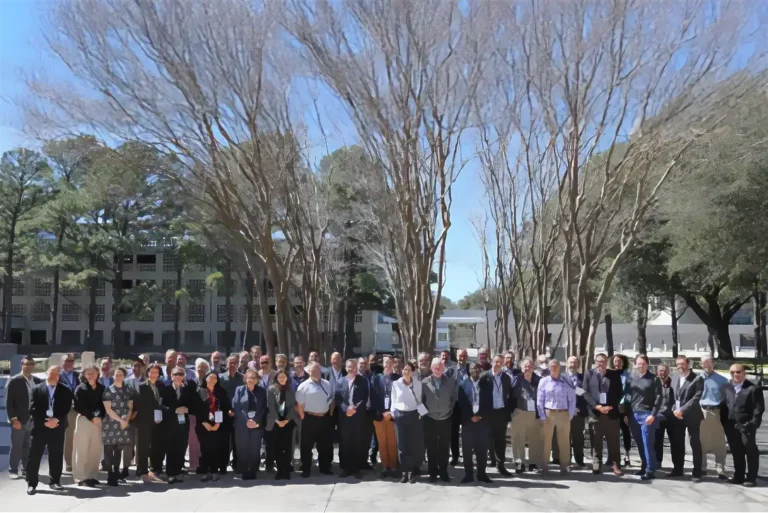
GHGT-17: Day 2 Technical Plenary
24 October 2024

The technical plenary on Day 2 of the GHGT-17 Conference featured two speakers. In order of appearance, these were Shell’s Onno van Kessel, General Manager for CCS Development and Subsurface, and the World Bank Group’s Natalia Kulichenko-Lotz, Program Leader, Sustainable Development. The speakers complemented each other very well, with Onno leading on the technical challenges faced in upscaling CCS from the million tonne (Mt) scale to the gigatonne (GT) scale, while Natalia spoke on the challenges faced in introducing CCS to developing countries, economies where the greater part of the world’s CCS deployment must be located if climate goals are to be achieved.
Onno began with a graph showing that, worldwide, fossil fuels contribute over 80% to today’s primary energy mix. If this is to drop by around 50%, as Shell’s analysis indicates, a balanced and orderly transition must take place – with an acceleration of low and negative carbon solutions driving decarbonisation. The share of energy demand from electrification must rapidly increase along with an unparalleled upscaling of the carbon removal solutions, CCS and DAC.

He described Shell’s impressive CCS portfolio located in North America, Europe and Australasia. Stakes were held in a range of diverse plants at various stages of development and maturity. To deploy and upscale CCS effectively, Onno listed nine essential enablers. While all these will not be listed here, they included the need for durable policy mechanisms to encourage finance and investment, overcoming value chain co-dependencies, addressing technical complexities, defining industry standards and effective public consultation. A social licence to operate was essential, as was overcoming the affordability gap for customers. And balancing the triple constraint of speed, quality and cost, where trade-offs were required.
Onno then addressed some of the technical complexities faced in large and diverse hubs, in moving from the Mt-scale to the Gt-scale. Whether it related to legacy wells, induced seismicity, pressure management, cold injection, CO2 composition or system integration, curiosity, data sharing and industry dialogue was needed to address them. With an early megaproject mindset required for rapid upscaling, i.e., there was the need to design, build, operate and replicate with significant upscaling, affordability and long-term capability in mind.
Next up, Natalia described some of her experience from 15 years of supporting CCUS development globally, mostly in developing countries. According to the IEA NZE scenario, of the 6 Gt CO2 to be captured in 2050, around two-thirds must be in emerging market and developing economies. Given the status of current CCS deployment, this is an incredible hill to climb and the work that Natalia does in laying some of the foundations for it is invaluable.
Natalia explained that, for CCS to be adopted, an enabling environment is required. Technologies cannot be deployed without a licence to operate. This means, among others, that legal and regulatory frameworks must be put in place, storage resource must be characterised, national and sub-national carbon management strategies and policies must be put in place. Large-scale climate finance and new investment mechanisms are needed to support deployment of innovative climate and GHG-reduction technologies in World Bank client countries.
The work described was undertaken under the purview of the World Bank CCS Trust Fund, funded by the UK and Norway, that closed in August 2024 after 15 years of operation. The activities focused on developing a CCUS enabling environment in nine countries and regions. The types of support offered included global knowledge management, capacity building, technical assistance, funding for pilots, and market and business model development.

Advancing and building capacity on CCS before the technology became mainstreamed was a key success of the program. Assessing CCUS potential, exchanging technical knowledge, developing economic and business models, and assessing environmental and social impacts were all important aspects of building CCUS capacity in 11 countries and three regions. Particular successes included the establishment of a pilot CO2 storage project in South Africa, the creation of storage atlases for South Africa and Nigeria, and supporting the government of Timor-Leste in identifying legal and regulatory frameworks for CCUS.
There were a number of key lessons that came out of the program. Natalia emphasised that developing countries need support to develop CCUS enabling environments. Cost was a key consideration for many governments and private sector actors in low- and middle-income countries. Centres of excellent could serve as focal points, supporting long-term development. In particular, continuity in government strategies and priorities was essential.
Looking forward, Natalia described how carbon management could support the achievement of SDG goals, e.g., SDG 7 (affordable and clean energy), SDG 8 (decent work and economic growth, SDG 9 (industry, innovation and infrastructure, and SDG 12 (responsible consumption and production). She pointed out how low- and middle-income countries could use carbon management for continued development, quoting storage hubs, generation and sale of reduction or removal credits, and production of low-emission products.
Carbon management could also be used for development, with the World Bank facilitating several initiatives. For example, it delivers finance, helps countries overcome barriers in accessing funding via carbon markets. While it supports CDR projects relating to afforestation and reforestation, biochar and soil carbon sequestration, the World Bank is looking at how it might also support other CDR technologies, such as BECCS and DACCS.
Ultimately, a key message is that more support is needed. The World Bank has ongoing dialogue in many low- and middle-income economies, with many of them including technology-based carbon management in their NDCs and Long-Term, Low-Emission Development Strategies (LTSs).
Finally, IEAGHG was very pleased that Onno and Natalia were able to accept their invitations as plenary speakers at GHGT-17. We greatly appreciate Shell’s membership and technical inputs to IEAGHG, and are proud of our past and ongoing collaboration with the World Bank.
Other articles you might be interested in
Get the latest CCS news and insights
Get essential news and updates from the CCS sector and the IEAGHG by email.
Can't find what you are looking for?
Whatever you would like to know, our dedicated team of experts is here to help you. Just drop us an email and we will get back to you as soon as we can.
Contact Us Now









